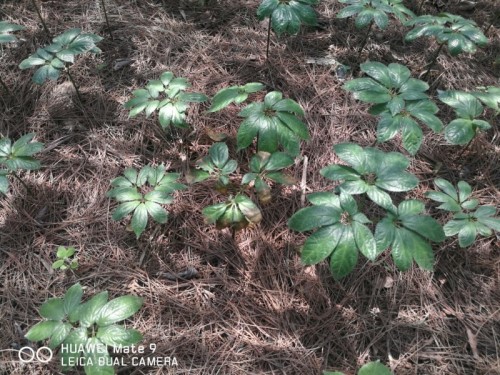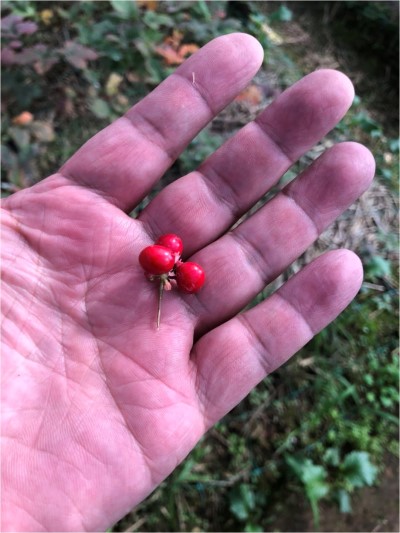Herbal Medicine Cultivation: Restoring Soil Fertility and Solving Replanting Problems
New Sun Oversea specializes in Chinese herbal medicine soil restoration, replacing traditional pesticides and chemical fertilizers, inhibiting pathogens, and solving replanting problems. We help you cultivate ginseng, American ginseng, and Notoginseng (Sanqi) without pesticides and harvest medicinal materials free of pesticide residues.
There are over 600 commonly used Chinese medicinal materials, with more than 300 already being artificially cultivated. The planting area across Asia exceeds 2 million hectares, but common issues include lack of standardization in planting areas, blind expansion into unsuitable regions, leading to soil fertility loss, reduced efficacy, loss of authenticity, and harmful residue in medicinal materials.
These issues stem from Chinese medicinal materials being super long-term crops, such as the well-known five-year White Peony Root and six-year Ginseng, which require long-term establishment on the same piece of land, naturally leading to soil depletion and the buildup of specific pathogens.
Everyone wants to restore soil fertility and address pathogen issues. If relying on the old thinking of using heavy chemical fertilizers and heavy pesticides, it creates a vicious cycle of diseases, residual fertilizer, residual toxins, and barren land. Incorrect planting habits can result in land that may not return to production even after more than a decade of fallow, and it turns life-saving medicine into toxins that cause illness.
To ensure that medicinal materials truly "cure" rather than "cause" illness, and to enable long-term economic use of the land, New Sun Oversea offers an integrated service with "Comprehensive Soil Microbial Community" (Soil Probiotics). This service inhibits pathogens without traditional pesticides, restores soil fertility, solves replanting problems, yields high-quality medicinal materials to boost planting enterprises' profits, enhances domestic medication safety, and moves towards the international market.
1 Capable of Chinese Herbal Medicine Soil Restoration
New Sun Oversea's "Comprehensive Soil Microbial Community" (Soil Probiotics) utilizes comprehensive microbial domestication from natural soil, giving our technology the following advantages:
- Optimal Environmental Adaptation: The strains originate from the soil, making them most efficient upon returning to the soil. Unlike laboratory strains, they do not need time to adapt to the environment and begin soil restoration immediately.
- Widest Range of Activity: Our comprehensive soil microbial community (Soil Probiotics), collected from different latitudes and altitudes, is adapted to high and low temperatures and varying nutritional conditions, making it suitable for the terroir characteristics of various medicinal material production areas.
- Adjusted Ratios: Chinese medicinal materials are super long-term crops, with a risk of pathogen infection lasting several years before harvest. Therefore, we specifically adjust the composition and concentration of the microbial community, coupled with correct application methods, to effectively restore soil fertility and overcome replanting problems.
- Mature Application Experience: Our experience in various planting sites has cultivated effective techniques such as drilling, broadcast spraying, and spot application. We provide integrated techniques that effectively leverage the power of the comprehensive soil microbial community (Soil Probiotics).
2 Capable of Overcoming Ginseng Replanting Problems
Ginseng can be considered a representative Chinese medicinal material, named because a mature root resembles a person with a head and four limbs. In Traditional Chinese Medicine, ginseng is used to invigorate vital energy and promote the generation of body fluids, calming the mind and enhancing wisdom. Its mild, sweet nature makes it suitable for general health maintenance, with annual consumption in Taiwan exceeding 1,000 metric tons.
Ginseng is a super long-term medicinal material; ginseng with medicinal properties (ginsenoside content above 3%) generally requires at least 3 years of cultivation on clean land, with the higher-priced "six-year ginseng" having ginsenoside content above 6%. However, the longer the planting period, the more prone the soil is to diseases. Although the three provinces of Northeast China are traditionally the home of ginseng, wild old mountain ginseng is no longer found in the long-developed lands. In recent years, ginseng farmers have faced increasing difficulties due to the decline in ginseng field fertility, replanting problems, and severe diseases.


One of our clients in a certain county in Northeast China faced replanting problems with the following symptoms: (1) Even on land that had been fallow for a long time or on new land, ginseng planted for more than 3 years began to show pathological changes, with the epidermis discolored and withered, suffering from bacterial and fungal infections commonly known as root rot and rust rot; (2) The old ginseng fields, which had been planted with ginseng before, severely declined. Neither pesticides nor organic fertilizers could completely eliminate pathogens or restore soil fertility. Seedlings planted in the summer of that year withered and died sequentially; (3) The traditional fallow method for restoring soil fertility required time increasing from 6 years to 10 or even 15 years, with fewer available lands and high costs for developing new land. Due to these issues, the client sought assistance from New Sun Oversea.
Based on the growth characteristics of ginseng, before autumn sowing, we arranged for early mixing of high-efficiency organic fertilizer, secondary fermented with agricultural bioactive water, into the old ginseng field. This eliminated the need for long-term fallow. The soil probiotics restored the microbial ecology of the old ginseng field. After the ground thawed the following year, we used agricultural bioactive water for irrigation to ensure successful continuous cropping of ginseng. Subsequently, we maintained fertility management, regularly using New Sun Oversea series products to maintain the concentration of soil probiotics and inhibit the proliferation of pathogens and fungi.
After soil improvement with agricultural bioactive water, even veteran ginseng growers were surprised by the change in soil vitality. First, the seedling death rate significantly dropped to 5%, much lower than the general 40-50% death rate. Second, the ginsenoside content of two-and-a-half-year-old ginseng exceeded the national standard of 2.5% by more than twofold, reaching 5.41%, which is almost the concentration of 4-year or 5-year old ginseng. This indicates a significant increase in the nutritional function and fertilizer utilization function of the ginseng after soil improvement. As of 2021, the ginseng in our client's continuously cropped land has maintained a survival rate of over 90% and officially entered its 4th year. It can be said that the replanting problem has been solved, and the number of ginseng farmers benefiting from this improvement method continues to increase.
3 Capable of Overcoming Yunnan Notoginseng Seedling Death
Yunnan Notoginseng (Sanqi) is the main ingredient of Yunnan Baiyao, capable of invigorating blood circulation and vital energy. When used externally for trauma, it can quickly stop bleeding, form scabs, and heal wounds. Its common name, "Jin Buhuan" (literally "Does not exchange for gold"), shows its value as a precious medicinal material. Wild Yunnan Notoginseng grows in the deep mountains of Yunnan and Guangxi, at altitudes of 1,000 to 1,800 meters, within subtropical primeval forests. It does not require strong sunlight and has never been exposed to artificial pesticides or chemical fertilizers. However, it requires rich humus accumulated from fallen leaves, and a microbe-rich soil to cultivate its excellent medicinal properties.
In commercial cultivation, Yunnan Notoginseng soon encountered the same problem as ginseng. These two precious medicinal materials, one from the north and one from the south, both belong to the Panax genus of the Araliaceae family. They both require more than three years of growth to start possessing sufficient triterpenoid saponins/ginsenosides, and during this process, they heavily deplete the soil's natural nutrients. High-density artificial cultivation and demand for yield quickly deplete the soil fertility of Notoginseng fields. Shortening the fallow period or continuous cropping allows soil-borne pathogens to constantly have hosts, leading to root rot, wilting disease, root decay, and seedling death once replanting occurs. Despite growers using large amounts of Chloropicrin pesticide for fumigation and supplementing with organic or chemical fertilizers, new Notoginseng absolutely cannot be grown on old fields without 6 to 10 years of fallow. Furthermore, continuous heavy use of pesticides exacerbates the issue of pesticide residues, and the ecology of the area is completely wiped out after harvest.

To overcome the replanting problems and root rot/seedling death disease in Notoginseng, we implemented: (1) Soaking Notoginseng seeds in agricultural bioactive water for germination, and soaking before transplanting seedlings from the nursery; (2) Before transplanting, applying high-efficiency organic fertilizer secondary fermented with agricultural bioactive water, heavily mixing it into the planting site, then irrigating with agricultural bioactive water to supplement soil probiotics, inhibit soil pathogens, and replenish organic matter; (3) Continued use of New Sun Oversea series products during top dressing.
After two years of application until the present (2021), the seedling death rate of Notoginseng on the improved continuously cropped land has decreased from 60% to 10%. The 90% surviving Notoginseng seedlings show good growth, and soil acidification has improved. The declining soil fertility is continuously recovering. More importantly, the need for Chloropicrin pesticide fumigation has been eliminated, and the use of other pesticides is continuously reduced. The goal of cultivating high-quality medicinal materials with reduced or even non-pesticide, toxin-free methods is certainly achievable in the future.
4 Capable of Overcoming American Ginseng Root Rot
American Ginseng is a specialty of Wendeng District, Weihai City, Shandong Province. With increasing market demand for Chinese medicinal materials, the planting area has now exceeded 55,000 mu. The maturation period is at least 4 years, and the soil fertility decline after planting is quite severe. Many locals, unable to find available land, are forced to expand and move outwards. However, with unchanged field management practices, newly cultivated land used for American Ginseng must be left fallow for at least 5 years.
Through long-term investigation in Wendeng District, we found that soil that has grown 4-year-old American Ginseng becomes low in organic matter, acidic, and sparse and singular in microbial community composition. Such soil is prone to pathogens like root rot, rust rot, and damping-off, collectively known as replanting problems, which threaten the harvest at different stages of American Ginseng growth. Guided by the belief that "to grow good crops, one must first cultivate good soil, and to cultivate good soil, one must first cultivate good microbes," we collaborated with local research units to develop a method for regulating the soil microbial ecology and restoring soil fertility.

We implemented: (1) Soaking seeds in agricultural bioactive water before sowing; (2) For new land or old ginseng fields, using high-efficiency organic fertilizer secondary fermented with agricultural bioactive water, heavily mixing it into the planting site, then irrigating with agricultural bioactive water to supplement soil probiotics, inhibit soil pathogens, and replenish organic matter; (3) Continued use of New Sun Oversea series products during top dressing. Regular use of these three methods solves replanting problems, allowing old American Ginseng fields to be replanted without a 10-year fallow, reducing the seedling death rate in continuously cropped ginseng fields to 5-10%, and cultivating American Ginseng that is pesticide-free, toxin-free, rich in saponins, and intensely flavored.
Reference: Valuable On-site Experience
5 List of Improvement Products
- Agricultural Bioactive Water Series
- Soil Improvement Material Bio-Humus Series
- On-site Integrated Techniques
6 Restoration Achievements
- Northeast China Ginseng Replanting Problem Overcome, with emergence and survival rates of over 90%, and ginsenoside content far exceeding national standards (Total Saponins: 3.6% at 2 years, 5.4% at 30 months).
- North China American Ginseng Replanting Problem Overcome, with emergence and survival rates of over 90%.
- Yunnan Notoginseng Replanting Problem Overcome, with first-year emergence and survival rates of over 90%.